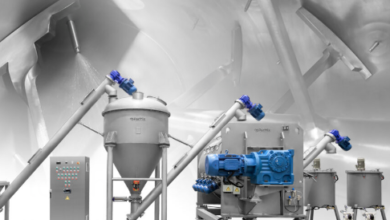How Office Workstations Influence Employee Engagement

Employee engagement is a critical factor for business success. Engaged employees are more productive, innovative, and committed to their roles, creating a positive impact on overall workplace morale. A key yet often overlooked factor in fostering engagement is the design and functionality of office workstations. By understanding the role workstations play in employee satisfaction, organisations can create environments that encourage collaboration, creativity, and productivity.
Ergonomic Design and Employee Well-being
The physical comfort of employees is directly linked to their engagement levels. Poorly designed workstations can lead to discomfort, fatigue, and even long-term health issues, which in turn affect focus and motivation. Ergonomic workstations prioritise employee well-being by offering adjustable chairs, desks, and monitor stands that cater to individual needs. When office furniture supports good posture and reduces physical strain, employees are better able to concentrate on their tasks and maintain energy throughout the day.
Fostering Collaboration Through Layout
The layout of office workstations plays a significant role in how employees interact with one another. Open-plan workstations encourage teamwork and the free exchange of ideas, while modular furniture allows for adaptable spaces that can be reconfigured to suit the needs of different teams. For tasks requiring privacy or focus, the inclusion of partitioned workspaces ensures that employees can work without distractions. Striking the right balance between collaboration and privacy enhances engagement by accommodating diverse working styles.
Technology Integration for Seamless Workflows
Modern workstations need to integrate technology seamlessly. From docking stations to cable management systems, ensuring that all technological tools are accessible and organised is essential for maintaining productivity. Office furniture that supports these needs, such as desks with built-in charging ports or monitor arms, helps create an efficient and clutter-free environment. When employees have the tools they need at their fingertips, they can focus on their work without unnecessary interruptions.
Customisation and Personalisation
Giving employees the freedom to personalise their workstations can significantly impact their engagement levels. Whether it’s adding family photos, choosing desk accessories, or adjusting the height of their chairs, personalisation allows employees to create a space that feels uniquely theirs. Office furniture that is adjustable or modular supports this need, enabling employees to tailor their environment to suit their preferences and working habits. This sense of ownership fosters a deeper connection to their workspace and, by extension, their role within the company.
The Impact of Natural Elements
Incorporating natural elements into office workstations has been shown to improve employee satisfaction and engagement. Plants, natural lighting, and wooden finishes create a calming atmosphere that reduces stress and promotes focus. Workstations positioned near windows or equipped with desk lamps that mimic natural light can make a significant difference. Pairing these features with high-quality, sustainably sourced office furniture further enhances the workspace’s appeal, reflecting the organisation’s commitment to environmental responsibility.
Encouraging Movement and Flexibility
Sedentary work habits are a common issue in office environments, leading to decreased energy and engagement. Workstations that promote movement, such as sit-stand desks, encourage employees to switch between sitting and standing positions throughout the day. This flexibility not only improves physical health but also stimulates mental alertness. Additionally, breakout areas with comfortable office furniture provide employees with alternative spaces to work or take short breaks, further promoting a dynamic and engaging workplace culture.
Creating a Sense of Community
Workstations that are strategically designed to bring teams together can strengthen the sense of community within an organisation. Shared desks or collaborative hubs allow for impromptu meetings and brainstorming sessions, fostering a spirit of camaraderie. When employees feel connected to their colleagues, they are more likely to be engaged and motivated. Thoughtfully chosen office furniture, such as communal tables or lounge seating, facilitates these interactions while enhancing the overall aesthetic of the workplace.
Supporting Mental Health and Focus
A well-designed workstation can also support mental health by reducing stress and distractions. Acoustic panels, privacy screens, and organised desk layouts help minimise noise and visual clutter, creating a tranquil environment for focused work. Comfortable and functional office furniture further contributes to this balance, allowing employees to immerse themselves in their tasks without unnecessary disruptions. A workspace that prioritises mental well-being shows employees that their needs are valued, which in turn boosts engagement.
Aligning Workstations with Organisational Goals
The design of office workstations should reflect the organisation’s culture and objectives. For instance, a company focused on innovation might prioritise collaborative spaces, while one centred on precision and detail might favour quiet, individual workstations. Aligning the layout and furniture choices with these goals reinforces the organisation’s values and helps employees feel more connected to their work. High-quality office furniture that complements these designs demonstrates a commitment to creating an inspiring and supportive workplace.
Investing in the Future of Work
As the nature of work evolves, so too must office workstations. Hybrid work models and technological advancements require flexible and adaptive solutions. Investing in versatile office furniture that can accommodate changing needs ensures that workstations remain relevant and engaging for years to come. Employees who feel supported by a forward-thinking workplace are more likely to stay motivated and committed to their roles.
Creating workstations that enhance employee engagement is not just about aesthetics or functionality—it’s about recognising the connection between the physical workspace and overall job satisfaction. Thoughtful design choices, combined with the right office furniture, can transform a workplace into an environment where employees thrive and contribute their best.







